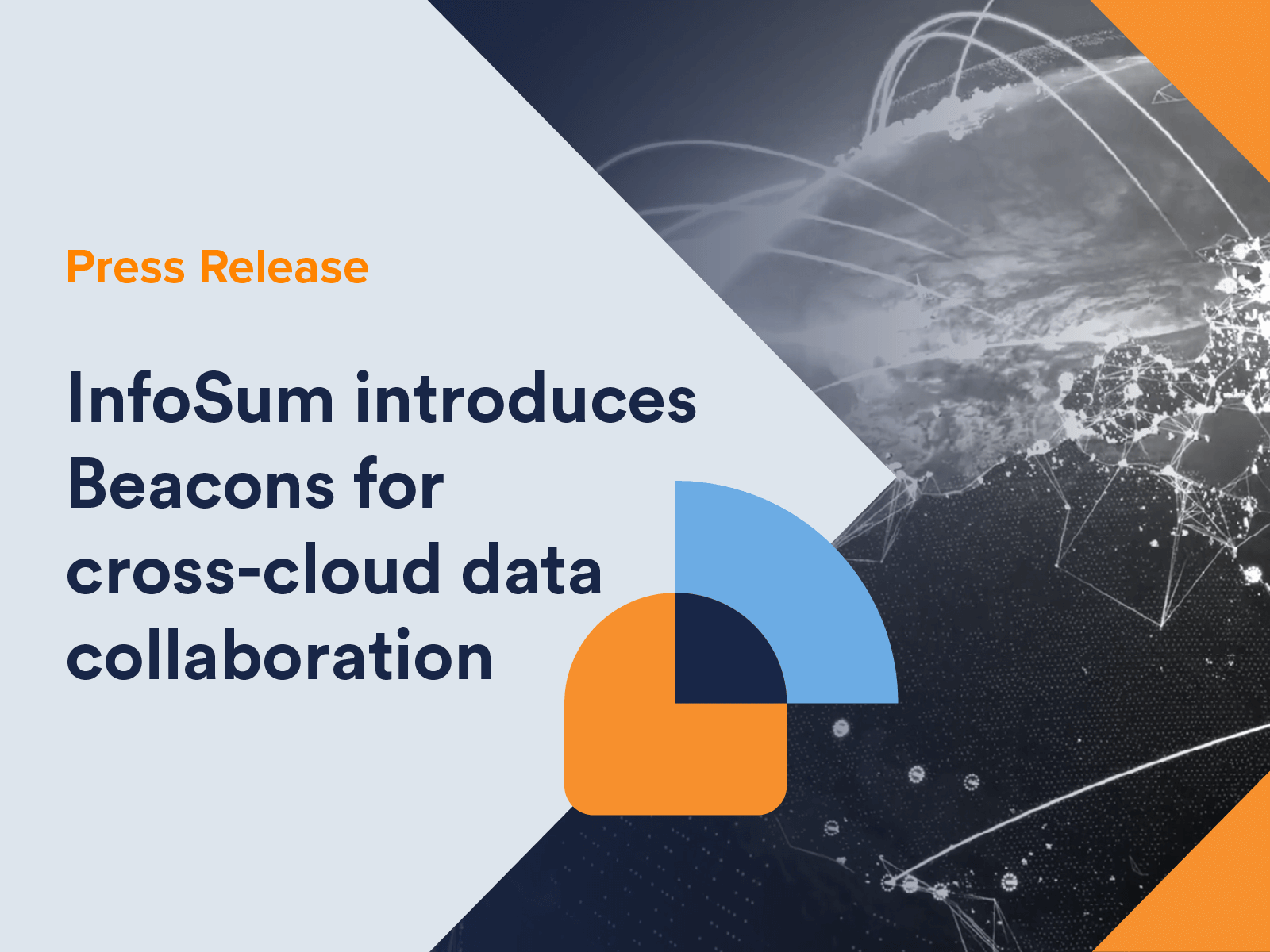In our previous blogs, we have outlined why organizations should have a first-party data strategy and how organizations unable to collect customer data at scale can tap into second-party data opportunities. In both cases, secure collaboration between organizations is fundamental in unlocking the total value from this data to deliver the rich and personalized experiences customers desire.
The value of collaboration can be seen across many areas of our lives. Consider a great band. Paul McCartney alone is great. Paul McCartney and John Lennon together were incredible. But when Paul McCartney, John Lennon, George Harrison and Ringo Starr collaborated, as seen in the Disney+ mini-series Get Back, it was magic.
A retailer can harness the power of their shopper and loyalty card data to improve their customers' in-store and e-commerce experiences. That retailer can collaborate directly with one of the CPG brands whose products they sell to execute a bespoke shopper marketing campaign to drive demand and increase conversions. One or multiple media owner partners can also be brought into the multi-party collaboration to extend the reach of their campaign across multiple touchpoints and channels. And finally, the retailer, CPG brand, and media owners can collaborate with an identity and data provider to extend the overlap between their shared customer base and enrich audience profiles to optimize campaign accuracy and performance with additional demographic and behavioral intelligence.
There are four focus areas for organizations establishing their data collaboration strategy for 2023.
1. Data
When starting a band, you must decide what type of music you’ll create, the genre. This decision will inform the band members you need, the production crew you’ll require, and more. This also applies to data. The first step for any organization is to answer their ‘why.’ Why do we need this data, and for what purpose?
For most organizations, this ‘why’ will revolve around the use cases they’re looking to solve or optimize, from insights and planning to activation and measurement.
Once an organization has identified the data-driven use cases they wish to focus on, they’ll need to determine what data they have today, if any. Exploring what information is currently collected on their customers through both online and offline sources. Revisiting our retailer example, this data could range from loyalty card data, online or in-store transaction data, as well as behavioral and demographic data collected from their website and/or app.
Once customer data has been collected, it must be protected and secured. Internal data governance and privacy protocols must then dictate how that data is to be used, by who, for what purpose, and to what extent. It is crucial for all organizations who collect or use first-party data to have clearly defined privacy and security standards in place that follow all relevant legislation and policies.
Once an organization has established its first-party data strategy and gotten its house in order, it must identify what additional data they need to acquire outside its organization. Organizations can maximize their data-driven use cases' scale, reach, accuracy, and performance by working with external partners. However, the same approach to data governance, privacy, and security must be applied to those external partners to ensure they are working with the right data from the right partners for the right reasons to reduce risk and maintain control.
2. Collaboration Dream Team
Now you have decided on the type of music your band will create, you need to recruit some band members. But it’s not just about who will play which instrument and who will be your frontperson; it’s about finding the right production team, songwriters, road crew, managers, promoters, and other valuable team members to make you successful.
Organizations establishing the data collaboration strategy will need to bring together their collaborative dream team to unlock the full potential of both their data and any collaborations they establish.
This team should consist of, but not be limited to:
- Data: This team is tasked with preparing your data assets, understanding what is required to make that data actionable, and extracting insights from the data. This team will need to work closely with the commercial team to unlock new data partnerships and opportunities.
- Commercial: This team will work on negotiating with and managing strategic partners to establish direct connections to valuable datasets that will improve performance, maximize insight, and unlock new opportunities. This team will also forge new pathways for data monetization, activation, and measurement to increase return on investment (ROI) and return on data (ROD).
- Legal & Compliance: This team is vital to keeping owned and operated data safe as well as reducing risk across all data collaboration partners. They will evaluate an organization's first-party data strategy from top to bottom, working with the data and commercial teams to approve the right technology and the right partnerships that won’t compromise the integrity, security and commercial value of their data or the privacy protection of their customers - more on this later.
3. Optimize the Tech Stack
Our band has now defined its genre and recruited its members and crew, now is the opportunity to arm them with the best equipment possible. From the instruments they'll play to the production equipment they'll use.
Marketing Technology (MarTech) stacks have grown significantly over the last decade. Forrester reports that MarTech accounts for over 20% of the marketing budget. But that tech stack is constantly changing, with 82% of marketers planning to change their stack in 2022. As we move into a post-cookie era and organizations focus more heavily on first-party and second-party data collaboration, now is the optimum time to rearchitect and refine their technology stack.
The starting point for many organizations will be to audit and optimize the technology platforms used to collect and organize their data, such as their data management platforms (DMPs), customer data platforms (CDPs), data warehouses, and customer relationship management systems (CRMs). Identifying potential risk areas of leakage, exposure, or misuse is crucial as data moves across each system and silo. Organizations should audit each partner and eliminate or replace legacy technology with a privacy-safe solution like a data clean room to minimize movement and risk.
A data clean room is also the best tool when collaborating with partners using sensitive information like first-party or even second-party data. Instead of relying on commercial or contractual trust in another party, the technology inherent within a data clean room or data collaboration platform can be utilized to set and maintain definitive data governance, privacy, and security standards. Each data owner retains complete control over how their data is utilized, by who, for what purpose, and for how long. This technology will securely connect first-party data from multiple organizations to enable insights, segmentation and measurement. Customer-centric, privacy-first organizations can rely on data clean rooms to provide a neutral environment that delivers secure data matching without data sharing and reliance on third-party identifiers.
Once the data has been connected, insights have been extracted, and campaigns have been established, the data is ready to be activated. This process relies on an additional set of systems and platforms that should also be evaluated and audited for potential risk.
One of the major benefits of data collaboration is the direct relationships forged, often between an advertiser and a media owner or publisher. In working directly with each other, costly middleware and opaque processes can be eliminated. This clean line of sight enables all collaborating parties to focus on executing better customer experiences rather than moving or reformatting data. Activating through a data clean room also ensures that buying and selling media, even through an ad server, DSP, SSP, CDP, or other intermediaries, is done with end-to-end privacy protection.
4. Prioritize Trust and Transparency
We've all seen the footage of successful bands as they are mobbed by their rabid fans and the endless media stories produced about their lives. Therefore, as any band grows in popularity, it will be essential to have in place personal security and a team in place to protect their privacy.
Your data, partnerships, and performance all hinge on the relationship you and your organization maintain with your customer base. Using and benefiting from customer data is a privilege that must be respected through honest and transparent communication with your customers about how their data is collected, protected, and used.
With endless stories of data breaches and ever-increasing compliance around data privacy, organizations must prioritize their data's security and their customers' privacy. This protection starts with ensuring that data assets are leveraged in a way that complies with privacy legislation. From here, organizations must invest in solutions such as data clean rooms and privacy-enhancing technologies (PETs) that provide complete consumer privacy protection and don't require data to be shared or moved, minimizing the risk of data leakage.
Secondly, and as we covered previously, it's vital to have legal and compliance teams fully on board and engaged in evaluating and monitoring each part of a collaboration strategy. This will help smooth all processes and set performance teams up for success.
Finally, having the right training and support teams in place is crucial to avoid any compliance blockers. These teams will feed the organizations with the correct information so they have context on data clean rooms, privacy enhancing technologies and other developments in the privacy and advertising space.
Having the right technology, teams, partners and processes in place is essential to ensure control and privacy end-to-end. But it is all for nothing if you lose the trust of your most valuable partner - your customer.
Time to go on tour
With the correct data, team, technology and processes in place, data collaboration will unlock new and exciting data-driven opportunities for organizations. While it can sometimes feel like a long and winding road, if we come together and focus on privacy-first data collaboration, I’ve got a feeling the industry can not only survive, but thrive.
For more information, download our quick reference infographic on creating a first-party data strategy and our ultimate guide to data clean rooms for everything you need to know about this collaboration technology.







